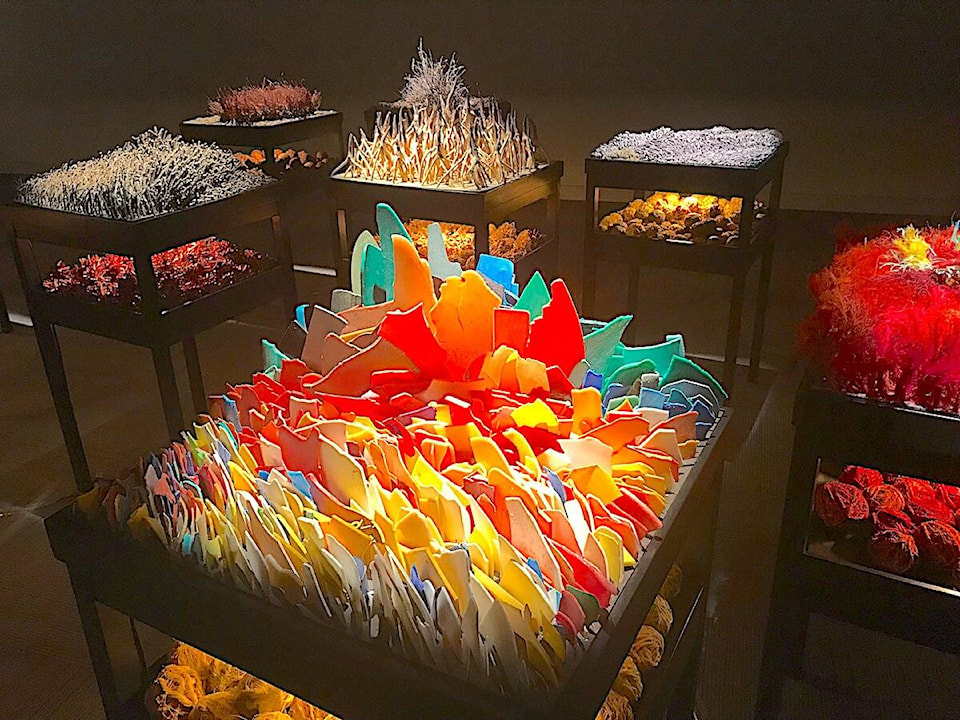Plastics, glass and other debris that washes ashore with the ocean tide have been turned into new sculptural installations at the Red Deer Museum and Art Gallery.
Tracing Tides is a show by Edmonton-based artist Lyndal Osborne that invites visitors to reflect on human interference in the natural environment.
Osborne has walked along shorelines on two different sides of the world: The Murramarang National Park on the eastern coast of New South Wales, Australia, and the Gros Morne National Park in Newfoundland.
Each time she found bits of debris.
The mixed-media artist picked up this material, including telephone wire, and crab and lobster bands, and gave it new context and meaning in her artwork.
Some of the detritus that the oceans gave up, and that Osborne later turned into sculptural installations, even resembles some of the beautiful ocean life found on reefs and the sea beds.
Osborne explained that her artwork is not only about making something new but also about finding a new meaning in objects and materials that already exist.
“This work represents a topographical view of the landscape(s) I encountered” around the Pacific and Atlantic oceans, she said.
“The rocky outcrops, sand dunes, river estuaries, rock pools, sandy and pebbly beaches were the focus of my investigation. At each low tide I would examine the high-water tide lines and collect various debris as it was washed ashore.”
Although some of the materials Osborne found were natural to the locale, the shorelines were often “peppered with man-made detritus,” sometimes from the fishing industry.
The artist, an Australian native who now teaches art and design at the University of Alberta, felt this had a “peculiar poignancy” in Newfoundland where the lobster bands, wooden crab traps, shotgun cartridges and discarded plastic reminded her of the impacts of overfishing.
The museum’s exhibitions coordinator Kim Verrier said human-made waste in waterways has frequently been in the news, along with images of straws, plastic bottles, plastic bags and microplastics found in fish.
“As visitors explore the galleries, we encourage reflection and discussion of our impact on the environment,” Verrier added.
The exhibition is on display at the museum until Sept. 6, with an opening reception on Friday, June 3, from 5 to 8 p.m. with the artist in attendance.
lmichelin@reddeeradvocate.com
Like us on Facebook and follow us on Twitter
